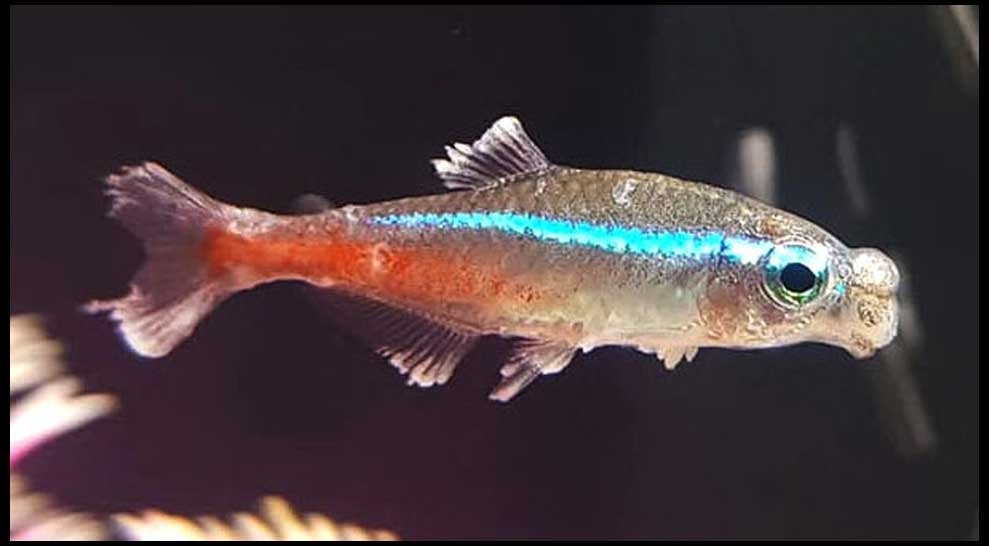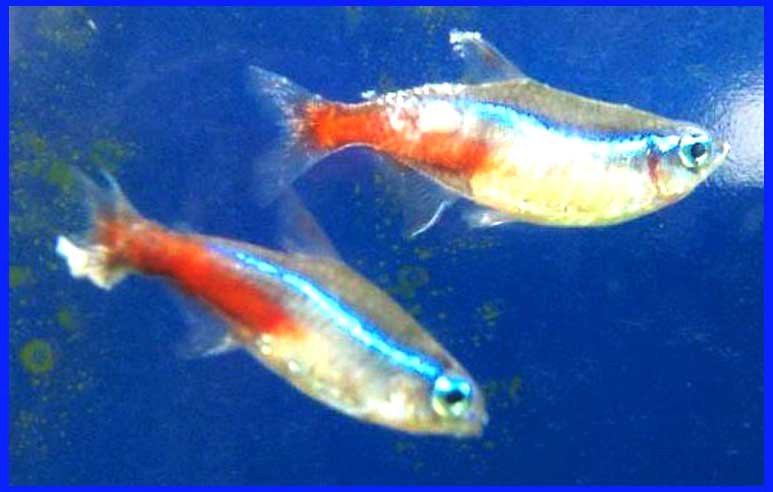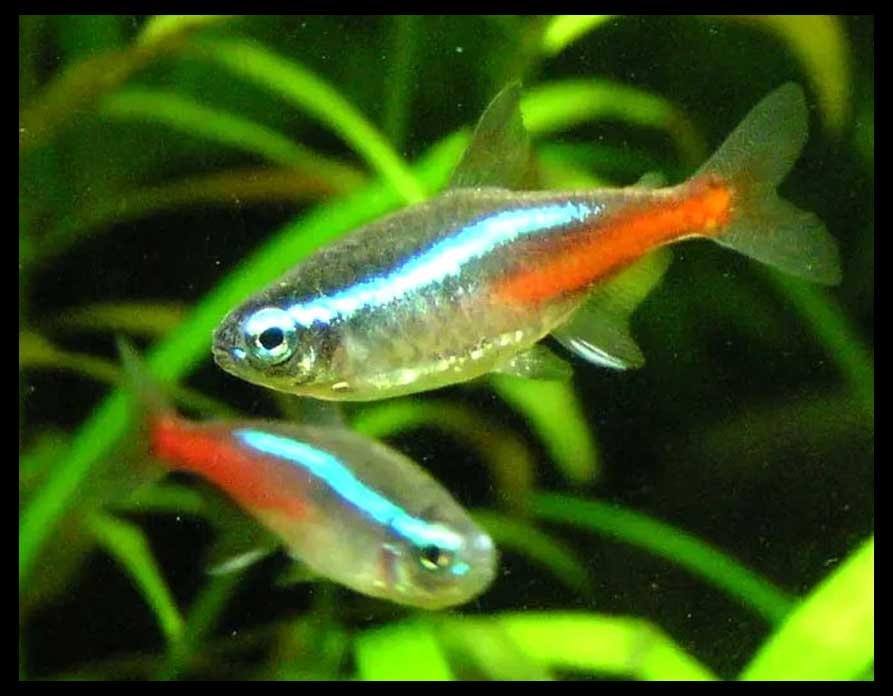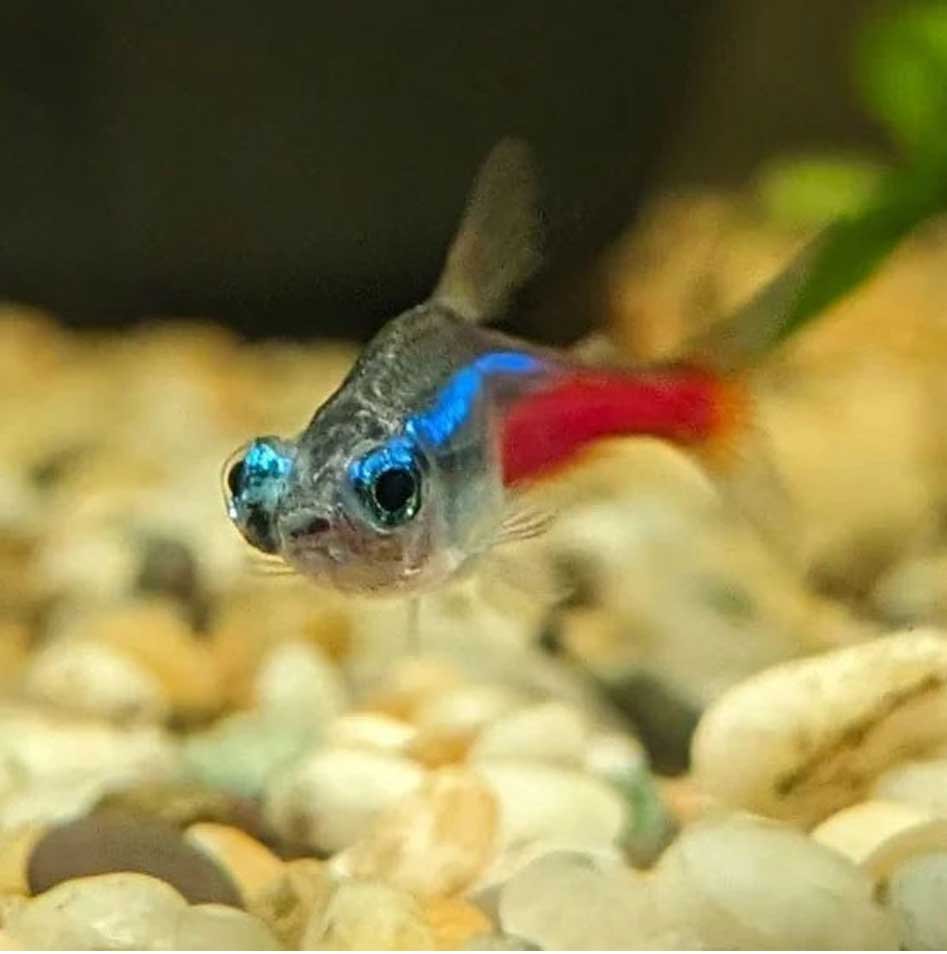Neon tetra fish disease causes, symptoms, treatment & prevention
Neon tetra fish are small, colorful, and popular among aquarium enthusiasts. But these lively fish can be devastated by disease.
Neon Tetra Disease (NTD) is a serious and often fatal condition that affects these beloved fish. It is named after the species it usually affects.
Understanding NTD is crucial to keeping your tank healthy. Since these diseases can spread quickly, it is important to recognize the early signs.
In this guide, we will cover the most common diseases, their symptoms, causes, and effective treatments to keep your neon tetra fish healthy.
Common Neon Tetra Diseases List
- Ich (White Spot Disease) – Parasitic (Ichthyophthirius multifiliis)
- Fin Rot – Bacterial (Pseudomonas, Aeromonas)
- Columnaris (Cotton Wool Disease) – Bacterial (Flavobacterium columnare)
- Swim Bladder Disorder – Diet-related or bacterial
- Fungal Infections (e.g., Saprolegnia) – Fungal
- Velvet Disease (Oodinium) – Parasitic (Piscinoodinium pillulare)
- Dropsy – Bacterial (often kidney failure-related)
- Internal Parasites (e.g., Camallanus Worms) – Parasitic
- Pop-Eye (Exophthalmia) – Bacterial or poor water quality
Introduction to Neon Tetra Disease
Neon Tetra Disease (NTD) is a serious condition that can affect your aquarium fish. If you are a fish enthusiast, you have probably heard of this disease.
Neon Tetra Disease was first identified in the 1970s. It quickly became a concern among aquarium hobbyists. The disease is named after the neon tetra fish, a popular species in home aquariums.
Over the years, researchers have learned more about NTD. Despite its name, the disease does not only affect neon tetras. It can affect a variety of species, making it important for all fish owners to be aware of its presence.
Causes of Neon Tetra Disease
Neon Tetra Disease often stems from parasitic infections. Poor water quality and stress further exacerbate the condition. Contaminated food and infected fish also contribute to its spread.
Understanding the causes of Neon Tetra Disease (NTD) is crucial for any aquarium enthusiast. Whether you are new to fishkeeping or an experienced hobbyist, knowing what triggers this disease can help prevent an outbreak in your tank.
01. Ich (White Spot Disease)

Neon fish -Ice-disease
- Causes: The parasite Ichthyophthirius multifiliis.
Symptoms:
- Small white spots on the body or fins of the fish
- Fin tucking
- Loss of appetite
- Excessive rubbing
- Labored breathing
- Lethargy
- Distracted behavior
Causes of Ich Disease:
- Poor water quality
- Stressed fish
- Adding infected fish or other contaminated material
General Treatment:
- Raise the water temperature: Raise the water temperature to 86ºF (30ºC). Gradually increase the temperature by 2ºF (1ºC) per hour until the correct temperature is reached.
- Increase oxygen or aeration in the tank: Increase oxygen or aeration in the tank to improve your fish’s immune system.
- Use aquarium salt: Use aquarium salt to treat Ich in freshwater aquariums. Dissolve 1 teaspoon per 1 gallon of water separately in a small amount of tank water, then add the mixture to the tank.
- Change the water daily: Do a 25% partial water change daily.
Use medications to treat your tank:
If Ich is present, it is possible to cure it with regular treatment. If the usual remedies don’t help, try these medications: Ich-X, Rid-Ich Plus, Blue Planet White Spot Remedy, and Mardel QuickCure. These medications are readily available at your local pet store. Always follow the directions on the medication label for the correct dosage and check if it is safe to use on your fish. Do not use medication without consulting a veterinarian. Always do a water change and vacuum your gravel before administering the medication. Medicines are more effective in a clean tank without other dissolved organics or nitrates interfering.
Note 1: When adding antiparasitic drugs to the tank, it is better to remove the carbon filter because it can absorb the medication.
Note 2: After treatment, the fish may have many wounds and tissue damage, creating an ideal environment for bacterial and fungal pathogens, so you may need to treat for secondary infections.
Prevention of Ich:
- Buy healthy fish
- Quarantine new arrivals
- Only buy plants from tanks without fish
- Care for fish tanks properly
- Keep fish free of stress
- Maintain water quality
- Avoid using wet equipment from one tank in another
- Feed nutritious food
02. Fin Rot

Fin Rot Disease
What is Fin Rot?
Fin rot is one of the most common diseases in freshwater angelfish, based on my aquarium-keeping experience. It is a bacterial disease that can be caused by Aeromonas, Pseudomonas, and Vibrio bacteria, which infect the fins, tail, and body of the fish.
Fin rot usually affects the tail fin but can also affect other fins, such as the dorsal and pectoral fins. In the early stages of fin rot, the tip of the fin will appear ragged as the protective membrane breaks down, and there may be white dots in the affected area. As the disease progresses, the amount of fin destruction increases, and the fin may take on a semicircular bite shape.
Reasons for Fin Rot:
- Bacteria: Usually caused by opportunistic bacteria (Aeromonas, Pseudomonas, Flexibacter)
- Water Quality: Poor water quality is the most common cause
- Stress: Weakens the fish’s immune system, reducing its ability to fight infection
How to Treat Fin Rot Disease:
- Cleaning and disinfection of tank equipment
- pH test of fresh and tank water
- Salt and tea tree oil: Keep the aquarium temperature around 75°F. Continue this treatment for 5–7 days by adding 1 teaspoon of aquarium salt per gallon of water.
How to Prevent Fin Rot:
- Aquarium maintenance: Change the water once a week and clean the tank regularly. Prune plants to keep fish safe, and use specific decorations for fish with long, fine fins.
- Reduce the number of fish in the tank: Overcrowding can cause high-stress levels and increase the risk of disease.
- Nutritious food: Feed fish a diet rich in vitamins A, D, B-complex, and omega-3 fatty acids to boost their immune system. Include high-quality foods, flakes, and frozen foods.
03. Swim Bladder Disease

Swim-Bladder-Disease
What is Swim Bladder Disease?
The swim bladder is a pneumatic internal organ in the fish’s body that helps the fish float and move easily in the water. When fish have trouble controlling their swim bladder, it is commonly called swim bladder disease.
Symptoms of Swim Bladder Disease in Fish
- Sinking
- Surface location
- Crooked back
- Reluctance to feed
- Head tilted up or down
- Buoyancy problems
- Reduced immune system
Causes of Swim Bladder Disease
- Eating Dry Food
- Enlargement of Organs
- Water Temperature: Water temperatures that are too low or too high can slow down digestion.
- Getting Hit: Collisions with objects in the tank, fighting, or falling can sometimes damage the swim bladder.
- Parasites: Parasites or bacterial infections can inflame the swim bladder.
- Other: Some fish are born with congenital problems that affect the swim bladder. Symptoms usually appear when they are young, although this is rare.
Treatment of Swim Bladder Disease
- Maintain Water Quality: Perform a 20–25% water change and raise the temperature to 78–80°F.
- Fasting: Do not feed the fish for three days.
- Use Salt in the Tank: Add one tablespoon of Epsom salt (magnesium sulfate) per 5 gallons of aquarium water.
- Antibiotics: If your fish’s condition does not improve after 10–12 days of treatment, you may need antibiotics.
How to Prevent Swim Bladder Disease
- Avoid frozen and dry food
- Avoid overfeeding
- Feed small meals
- Maintain water quality
- Feed high-quality food
04. Dropsy Disease

Dropsy-Disease
What is Dropsy Disease?
Dropsy in fish, also called bloat, is the swelling of the soft tissue in the body cavity of the fish. This swelling is caused by the accumulation of fluid in the fish.
Symptoms of Dropsy in Fish
- Abdominal swelling
- Swelling of the eyes
- Swelling and redness of the anus
- Stretched scales
- Pale gills
- Loss of appetite
- Breathing problems
Why Does Dropsy Occur?
- Poor water quality
- Unclean aquarium
- Wrong feeding
- Stress in fish
How to Treat Dropsy Disease
- Water Change and Control: Remove at least 75% of the water every 48 hours, but not more than 50% at one time.
- With Salt: If the fish has external wounds or injuries that allow water to enter the body cavity, add two teaspoons of aquarium salt per gallon of water.
- Antibiotics: If my infected fish does not improve after 8–10 days of treatment, I consult a vet and apply antibiotics.
How to Prevent Dropsy Disease
- Maintain a healthy environment in the tank
- Feed high-quality food
- Avoid overcrowding
05. Pop-Eye Disease

Pop-Eye Disease
Pop-eye disease (exophthalmia) is a condition where a fish’s eyes swell and protrude abnormally from their sockets. While not a disease itself, it’s a symptom of an underlying issue, such as infection, injury, or poor water quality. If left untreated, it can lead to blindness or even death.
Symptoms of Pop-Eye in Neon Tetras
- Bulging or swollen eyes (one or both)
- Cloudy or discolored eyes
- Redness or inflammation around the eye
- Loss of appetite and lethargy
- Rubbing against objects (if caused by parasites)
Causes of Pop-Eye in Neon Tetras
- Bacterial Infection (e.g., Aeromonas, Pseudomonas) – Often due to poor water conditions.
- Fungal Infection – Secondary to injury or a weak immune system.
- Internal Parasites – Can cause fluid buildup behind the eye.
- Physical Injury – Aggressive tank mates or sharp decor.
- Poor Water Quality – High ammonia, nitrites, or incorrect pH.
- Nutritional Deficiencies – Lack of vitamins (e.g., Vitamin A).
Treatment for Pop-Eye in Neon Tetras
- Isolate the Fish (If Possible)
Move the affected neon tetra to a quarantine tank to prevent spreading infection. - Improve Water Quality
- Perform a 30–50% water change.
- Test water for ammonia, nitrites, nitrates, and pH.
- Ensure proper filtration and aeration.
- Medicate Based on Cause
- For bacterial infections: Use antibiotics like erythromycin, kanamycin, or Maracyn.
- For fungal infections: Treat with antifungal meds (e.g., API Fungus Cure).
- For parasites: Use anti-parasitic treatments (e.g., Metroplex).
- Add Aquarium Salt
- Use 1 teaspoon per gallon to reduce swelling and support healing.
- Boost Immune System
- Feed high-quality, vitamin-rich foods (e.g., brine shrimp, daphnia).
How to Prevent Pop-Eye in Neon Tetras
- Maintain excellent water quality – regular water changes (25% weekly)
- Avoid overcrowding – reduces stress and disease spread
- Quarantine new fish – prevents introducing infections
- Remove sharp decor – prevents eye injuries
- Feed a balanced diet – enhances immune health
Parasitic Infections
Neon Tetra Disease is often caused by a parasite called Pleistophora hyphessobryconis. This parasite infects the muscle tissue of the fish, causing symptoms such as color loss, irregular swimming, and cysts. If you see these symptoms in your fish, act quickly. Quarantine the affected fish to prevent the spread of the disease. When I first started my aquarium, I lost several neon tetras to this parasite before I knew what was happening. Quick action and quarantine helped me save the rest.
Environmental Factors
The environment in your aquarium plays a vital role in the health of your fish. Poor water quality, sudden temperature changes, and overcrowding can stress your fish, making them more susceptible to diseases like NTD.
Monitor water conditions regularly. Use a good-quality water testing kit to check ammonia, nitrite, and nitrate levels.
Keep the temperature stable. Neon tetras prefer water temperatures between 70–81°F (21–27°C). Overcrowding can also be a problem. Make sure your aquarium is spacious enough for all of your fish. A good rule of thumb is one inch of fish per gallon of water.
Can sudden changes in water conditions be harmful to your fish? Fish are very sensitive to their environment. Even small fluctuations can stress them out, weakening their immune systems and making them more susceptible to disease. By understanding these factors, you can take proactive steps to ensure your fish stay healthy and vibrant.
Observation Techniques
Pay close attention to your fish every day. Watch for color changes. Affected fish may lose their bright glow. Inspect for unusual spots or lesions. Check if the fish are swimming abnormally. Watch for sluggish or erratic movements. Notice if the fish are isolating themselves. Healthy fish usually swim in groups.
Diagnostic Tools
Use a magnifying glass to inspect the fish closely. This helps to identify small lesions. Check the water quality regularly. Poor water conditions can stress the fish. Stress makes them more susceptible to disease.
Consider using a fish health monitoring kit. These kits can detect pathogens early. Consult a veterinarian for a professional diagnosis. A veterinarian can provide accurate results.
Prevention Strategies
Clean the aquarium regularly to prevent neon tetra fish diseases. Maintain stable water conditions and avoid overcrowding. Quarantine new fish before adding them to the tank.
When it comes to keeping your neon tetra fish healthy and vibrant, disease prevention is key. While you may think that treating the disease is the only solution, prevention can save you time and stress. Here are some practical prevention strategies you can implement today.
Ways to Quarantine
Quarantine new fish before adding them to your main tank. This step ensures that any potential disease is detected early. A separate tank for new arrivals allows you to monitor their health. Use this time to watch for any signs of illness. The quarantine period should last at least two weeks. This practice can significantly reduce the risk of spreading the disease to your healthy fish.
Monitoring Recovery
After treatment, keep a close eye on your fish. Observe their swimming patterns and appetite. Healthy fish are active and eat regularly. Check for signs of illness such as clipped fins or unusual spots. Use a quarantine tank if necessary. This helps you track their progress without risking the health of your other fish.
Regular water testing is essential. Make sure that water parameters are stable. These include temperature, pH, and ammonia levels.
Preventing Recurrence
Maintain a clean tank to prevent neon tetra disease from returning. Regular water changes are also important. They reduce the number of pathogens in the water.
Avoid overfeeding your fish. Excess food can contaminate the water by rotting. Feed small amounts that they can eat in a few minutes.
Introduce new fish cautiously. Quarantine them before adding them to the main tank. This step helps you catch any diseases early.
Finally, keep stress levels low. Stress weakens fish and makes them more susceptible to disease. Provide hiding places and avoid sudden changes in the tank environment.
Effects on the Aquarium Ecosystem
Neon Tetra Disease (NTD) can disrupt the balance of your aquarium. This disease affects not only the infected fish but also the entire ecosystem. Understanding its effects is crucial to maintaining a healthy aquarium.
Effects on Other Fish
NTD spreads quickly among fish. Infected fish show symptoms such as white spots and erratic swimming. Healthy fish become stressed and more susceptible to other illnesses. The disease can spread through shared water and equipment. Quarantine measures can help but may not always be effective.
Long-Term Consequences
The long-term effects of NTD can be serious. The disease can cause high mortality rates in the tank. The immune systems of surviving fish may be weakened. This can make them vulnerable to other diseases. The overall biodiversity of the tank is reduced. The loss of fish can disrupt natural hierarchy and behavior patterns.
Maintaining a healthy tank requires vigilance. Regular monitoring and quick action are essential. Always quarantine new fish before introducing them to your main tank. Proper care and maintenance can help prevent NTD.






